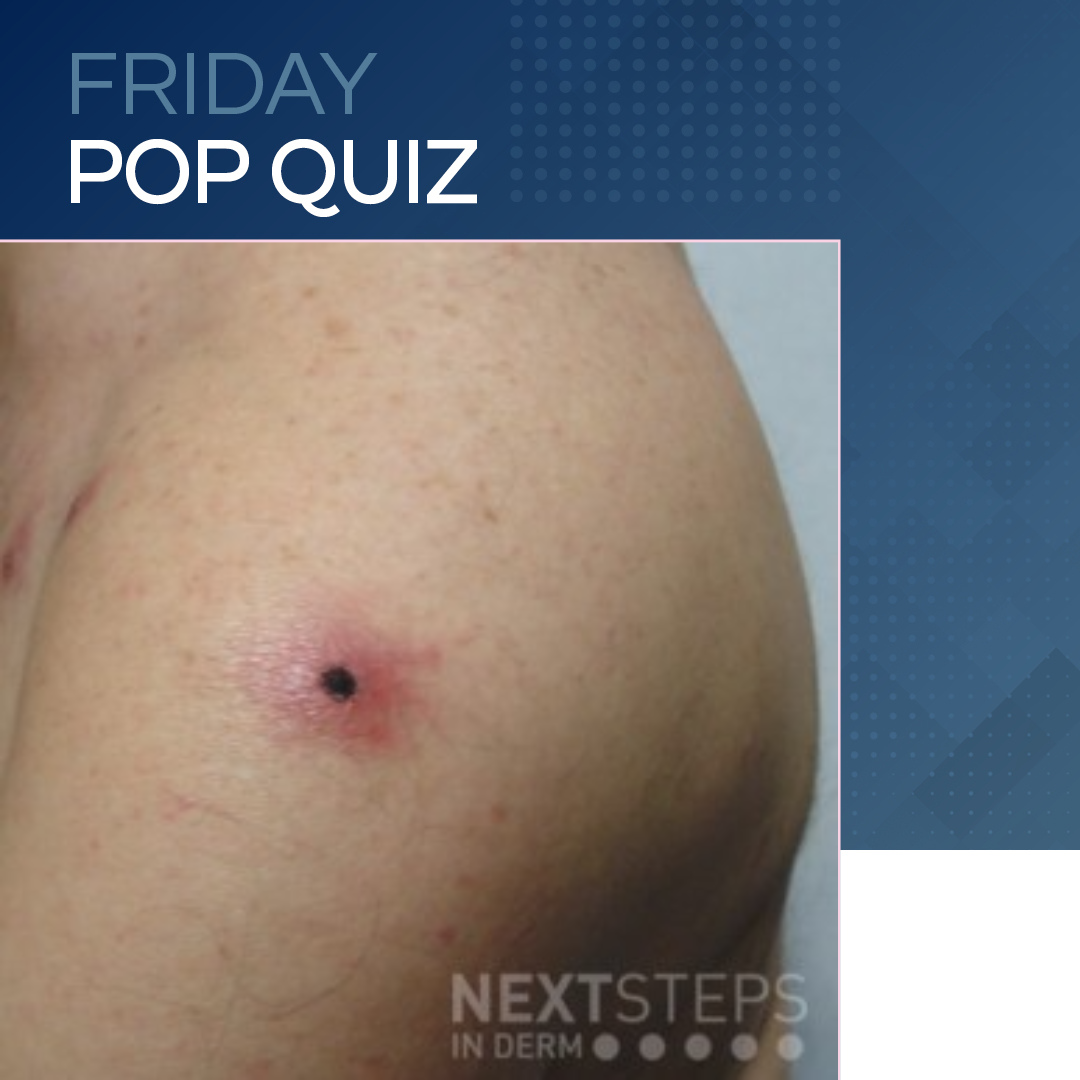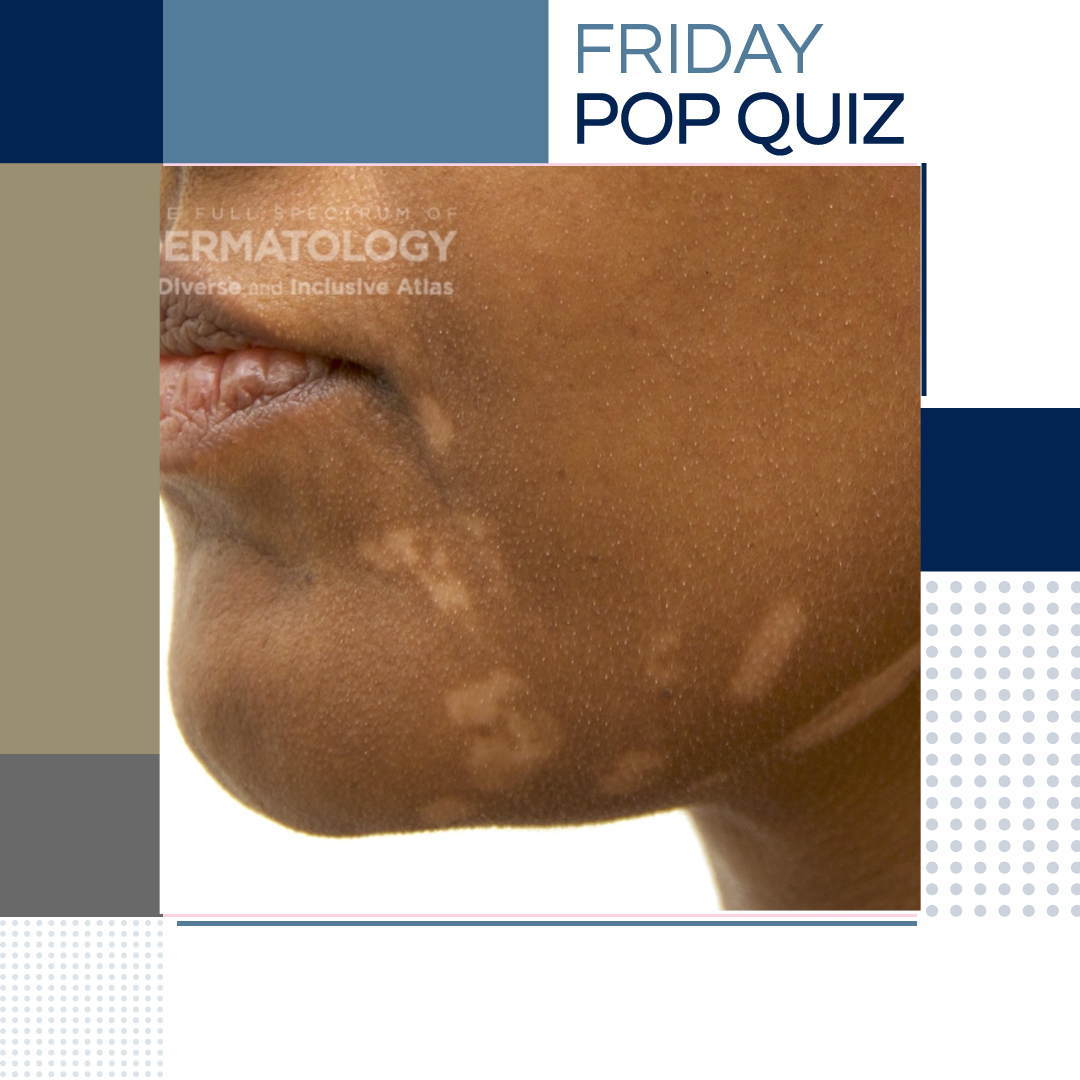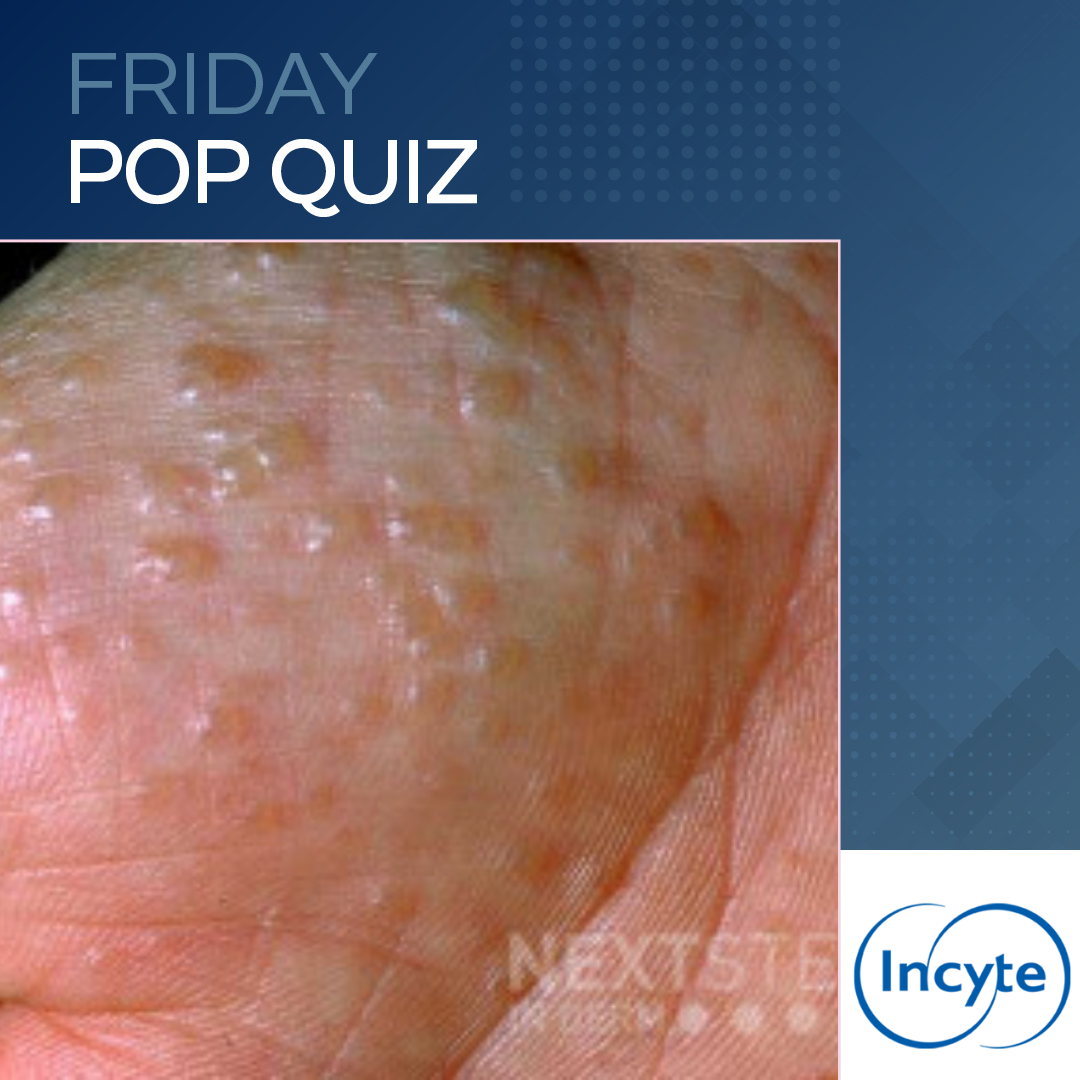Friday Pop Quiz 1/26/2024
208032080320803 A 34-year-old man with no past medical conditions presents with lesions as shown. Of the following, what is the most likely causative agent?
A. Aspergillus flavus
B. Group A beta-hemolytic streptococci
C. Pseudomonas aeruginosa
D. Klebsiella
E. Proteus
To find out the correct answer and read the explanation, click here. …
A 34-year-old man with no past medical conditions presents with lesions as shown. Of the following, what is the most likely causative agent?
A. Aspergillus flavus
B. Group A beta-hemolytic streptococci
C. Pseudomonas aeruginosa
D. Klebsiella
E. Proteus
To find out the correct answer and read the explanation, click here. …
 A 34-year-old man with no past medical conditions presents with lesions as shown. Of the following, what is the most likely causative agent?
A. Aspergillus flavus
B. Group A beta-hemolytic streptococci
C. Pseudomonas aeruginosa
D. Klebsiella
E. Proteus
To find out the correct answer and read the explanation, click here. …
A 34-year-old man with no past medical conditions presents with lesions as shown. Of the following, what is the most likely causative agent?
A. Aspergillus flavus
B. Group A beta-hemolytic streptococci
C. Pseudomonas aeruginosa
D. Klebsiella
E. Proteus
To find out the correct answer and read the explanation, click here. … 

 A 38-year-old woman with morbid obesity and major depressive disorder presents for evaluation of lesions on her axillae. Previously, the patient has used topical benzoyl peroxide and has received triamcinolone injections to affected areas with minimal improvement. Which of the following is the most appropriate next step in the treatment of the patient?
A. Admit to hospital for ertapenem
…
A 38-year-old woman with morbid obesity and major depressive disorder presents for evaluation of lesions on her axillae. Previously, the patient has used topical benzoyl peroxide and has received triamcinolone injections to affected areas with minimal improvement. Which of the following is the most appropriate next step in the treatment of the patient?
A. Admit to hospital for ertapenem
…  A 39-year-old woman with a history of alopecia areata presents for evaluation
of multiple macules and patches on her left mandibular face. She developed
these lesions slowly over several years, where they have remained stable for
many years. The patient’s goal now is to achieve repigmentation of the lesions.
The patient has previously used topical hydrocortisone 1% cream on the
lesions …
A 39-year-old woman with a history of alopecia areata presents for evaluation
of multiple macules and patches on her left mandibular face. She developed
these lesions slowly over several years, where they have remained stable for
many years. The patient’s goal now is to achieve repigmentation of the lesions.
The patient has previously used topical hydrocortisone 1% cream on the
lesions …  A 4-month-old infant is brought to the clinic by his mother. The mother reports
that her son has had lesions on his cheeks for several weeks. The mother
initially treated the lesions using an over-the-counter moisturizer. After visiting
her pediatrician, the patient’s mother tried bleach baths and received a steroid
cream, which she used once in the last month. Which of the following is …
A 4-month-old infant is brought to the clinic by his mother. The mother reports
that her son has had lesions on his cheeks for several weeks. The mother
initially treated the lesions using an over-the-counter moisturizer. After visiting
her pediatrician, the patient’s mother tried bleach baths and received a steroid
cream, which she used once in the last month. Which of the following is …  Which of the following histopathologic features is most likely to be encountered in this patient with pruritic hand lesions?
A. Eosinophilia
B. Floor-pattern salt-split skin
C. Leukocytoclasia
D. Parakeratosis
E. Spongiosis
To find out the correct answer and read the explanation, click here.
Brought to you by our brand partner
…
Which of the following histopathologic features is most likely to be encountered in this patient with pruritic hand lesions?
A. Eosinophilia
B. Floor-pattern salt-split skin
C. Leukocytoclasia
D. Parakeratosis
E. Spongiosis
To find out the correct answer and read the explanation, click here.
Brought to you by our brand partner
…